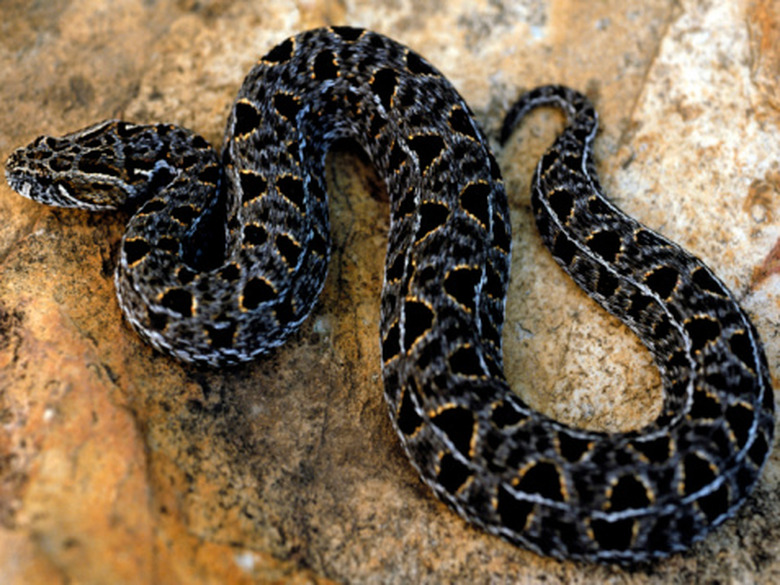Similarities Of Snakes & Lizards
With a collective 8,000 known species, lizard and snake species make up the largest taxonomic order of reptiles, known as squamata, which dates to the age of the dinosaurs. Snakes and lizards are grouped together because they share a significant number of physical, reproductive and metabolic characteristics. Snakes, in fact, are considered descendants of lizards.
In this article, we'll go over differences and similarities between lizard and snake species.
Evolution of Lizards and Snakes
Evolution of Lizards and Snakes
As we stated earlier, scientists believe that snakes and lizards evolved from a common ancestor. New evidence suggests that snakes descended from lizards, slowly and gradually losing their limbs to become the limbless creatures they are today.
One study published looked at hundreds of skull fossils of both snakes and lizards to see how the two types of creatures diverged. These studies showed that snakes diverged from lizards from a common ancestor known to burrow in the ground. It also found that limbless lizards are different anatomically from snakes.
Much of snake evolutionary history is unknown because of the lack of fossils.
Ectothermic
Ectothermic
Lizard and snake species — like all members of the class reptilia — are ectothermic, or cold-blooded. Being cold-blooded means that they do not possess the internal mechanisms that allow birds and mammals to maintain a constant body temperature.
Consequently, lizard and snake species sunbathe to warm up and seek the shade to cool down. Because their body temperature depends on external conditions, snakes and lizards cannot survive in very cold climates. They're often found in warm environments like deserts, tropical regions, forests, and beaches.
Lizard and Snake Reproduction
Lizard and Snake Reproduction
The overwhelming majority of snakes and lizards are oviparous. This is a term used to describe organisms that reproduce by laying eggs. A few snake species, however, are ovoviparous, which means that young hatch from eggs inside the body. Other snakes give birth to live young.
In all reptiles, however, fertilization takes place internally. At birth, the offspring of snakes and lizards are diminutive versions of adults. This means that they're essentially "miniatures" of adults and don't change in their look/appearance as they grow.
Skin
Skin
The term "squamata" is Latin for "scaled." All reptiles, snakes and lizards included, have very dry skin that is covered in scales. In some species, these scales are smooth, while in others they are keeled, thereby giving the organism a rough appearance and texture.
Lizards, however, have many more scales on their bellies than snakes, which have only one row of scales on their underside. The scales of snakes and lizards do not grow at the same rate as the animal, therefore squamates shed their skin periodically, a process known as molting, to accommodate new skin.
Organs
Organs
As reptiles, lizards and snakes have a few internal organ characteristics in common, such as a three-chambered heart with one ventricle and two atria. In addition, the primary means of respiration in both snakes and lizards are a pair of lungs, though the former often lack or have a significantly smaller left lung due to their relatively narrow bodies.
Differences
Differences
Though closely related, there are significant differences between snakes and lizards. Unlike snakes, most lizards have legs. A notable exception are legless lizards, which evolved separately from snakes.
Moreover, snakes do not have eyelids, while lizards do. Virtually all snakes are strict carnivores. Some species of lizards, however, also eat plant matter along with eating other animals. Snakes can consume prey much larger than their own bodies thanks to jaw bones that unhinge. Lizards do not possess this adaptation. Lizards, however, have ears, which another feature that snakes lack.
Cite This Article
MLA
Alonso, Nathalie. "Similarities Of Snakes & Lizards" sciencing.com, https://www.sciencing.com/similarities-snakes-lizards-8658503/. 22 November 2019.
APA
Alonso, Nathalie. (2019, November 22). Similarities Of Snakes & Lizards. sciencing.com. Retrieved from https://www.sciencing.com/similarities-snakes-lizards-8658503/
Chicago
Alonso, Nathalie. Similarities Of Snakes & Lizards last modified March 24, 2022. https://www.sciencing.com/similarities-snakes-lizards-8658503/
